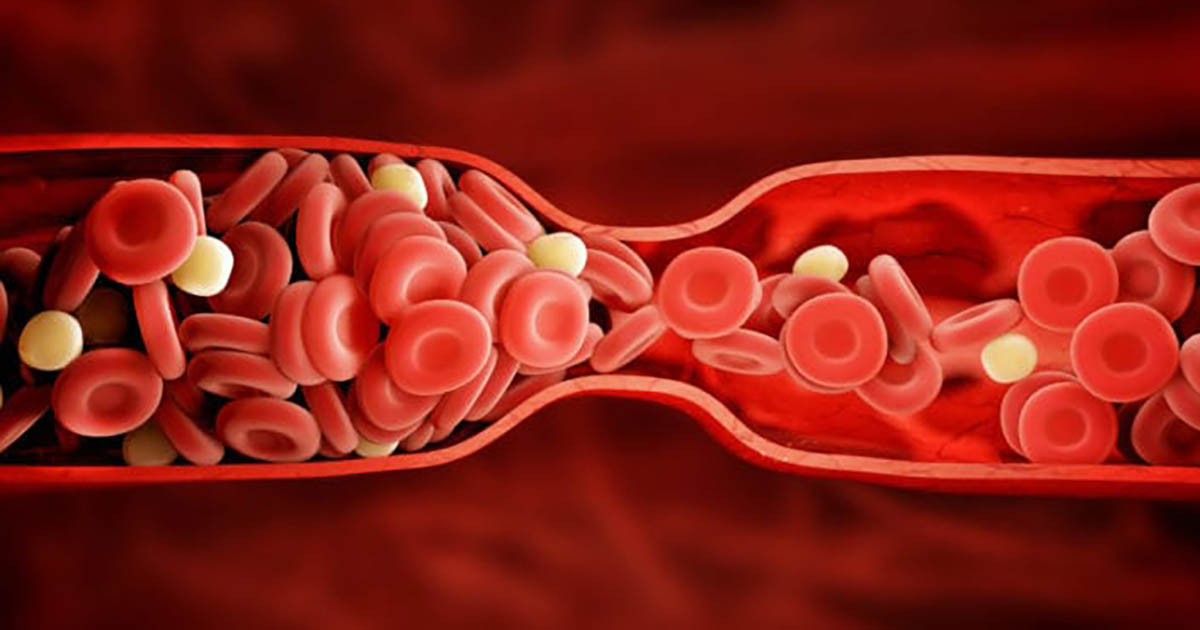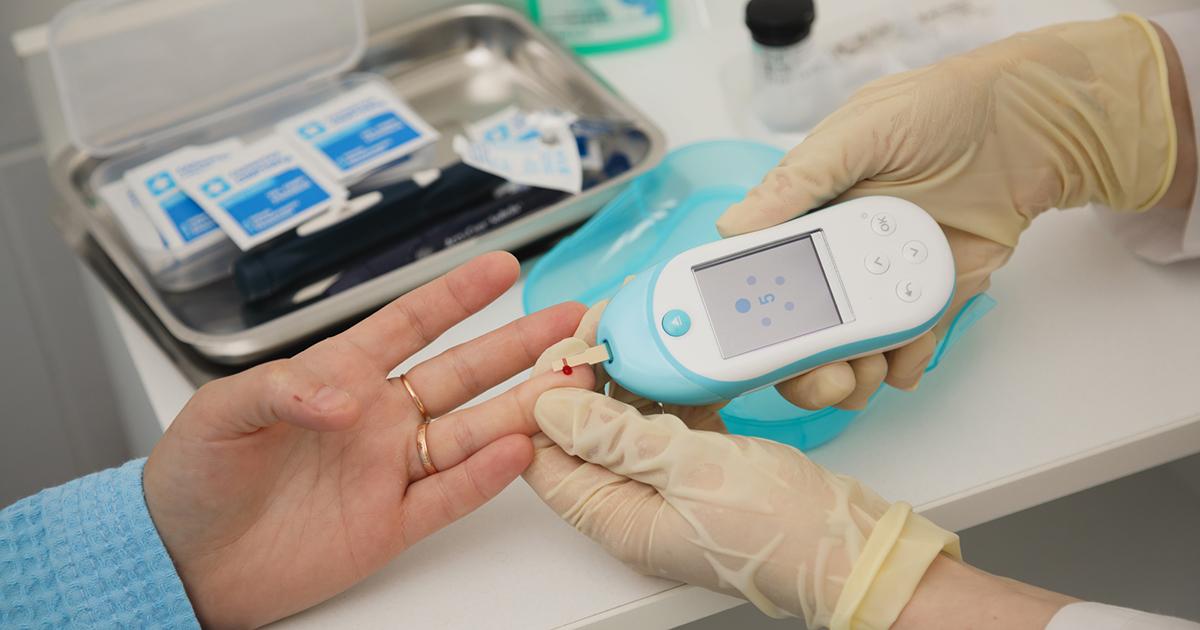Pancreatic Cancer: Look For These Signs Now
Pancreatic cancer can be deadly and often isn't easy to treat because it has metastasized too far by the time it is finally caught. This is why it is crucial to pay attention to the warning signs and address them as early as possible. Unfortunately, only about seven percent of individuals with pancreatic cancer survive longer than five years. With the pancreas being located so deeply within the body, warning signs tend to not be evident at first, which leads to a greater possibility of having a terminal case. Get to know these warning signs of pancreatic cancer now.
Abdominal Or Back Pain

The pancreas is located deep within the body, just below the liver. Tumors can grow in both the body and tail areas of the pancreas, and the larger they grow, the more pain they can cause in the abdomen. When pancreatic cancer spreads to the nerves surrounding the pancreas, pain can occur in the back as well. Since back and abdominal pain are both fairly common symptoms in many health conditions, other causes should be ruled out before pancreatic cancer is diagnosed. Other co-occurring symptoms of pancreatic cancer should be taken into consideration when addressing concerns with a doctor.
Get to know the next warning sign of pancreatic cancer now.
Unexpected Blood Clots

While blood clots certainly happen without the presence of cancer, an estimated one in five cancer patients will, at some point, develop a blood clot. The combination of a blood clot and cancer is known as cancer-associated thrombosis. Second only to the presence of cancer itself, blood clots are a leading cause of death in cancer patients. Individuals with pancreatic cancer are more likely to develop a blood clot than those with other types of cancer, so it is important for pancreatic cancer patients to avoid getting cancer-associated thrombosis by drinking fluids, quitting smoking, and getting enough exercise. If cancer-associated thrombosis does occur, quick treatment is vital.
Continue reading now to learn about more signs of pancreatic cancer.
Weight Loss And Poor Appetite

One of the most visible signs of pancreatic cancer is experiencing dramatic weight loss, which is often accompanied by not feeling hungry. This type of cancer-caused weight loss is known as cancer cachexia. Cancer cachexia leads to a decreased appetite and weight loss due to the fact it prompts rapid protein breakdown and calorie burning. With pancreatic cancer in particular, cytokines get released into the bloodstream and work in such a way that they cause the body to burn through exponentially more calories than it normally would. Rapid weight loss and lack of nutrition can lead to feeling weak and tired, ultimately negatively impacting a patient's quality of life and potentially resulting in hospitalization.
Learn more about what symptoms of pancreatic cancer everyone should be aware of.
Jaundice

Another obvious sign of pancreatic cancer is jaundice, which is commonly characterized by a yellowing of the whites of the eyes and the skin. This happens because bilirubin, a dark brown pigment generated in the liver, collects in the common bile duct when pancreatic tumors cause a breakdown in red blood cells. The common bile duct is located near the head of the pancreas, so cancer that starts in the pancreatic head and spreads throughout (and even beyond) the pancreas could place pressure on the common bile duct. Other symptoms of jaundice can include itchy skin, due to bilirubin buildup, and urine darkening.
Continue for more warning signs of pancreatic cancer now.
Diabetes

Diabetes and the pancreas are inextricably connected. The pancreas produces insulin, a hormone that helps the body use blood sugar, also known as glucose. Insulin lets glucose enter cells to produce energy, but when this doesn't happen, glucose pools in the blood, leading to high blood sugar. Symptoms of diabetes include neuropathy, renal disease, and high blood pressure. Patients who have battled the disease for longer than five years might be more prone to developing pancreatic cancer. Luckily, this can be prevented by getting proper nutrition as well as sufficient physical activity on a regular basis.
Uncover more details on pancreatic cancer symptoms now.
Fatty Stools

Fatty stools or steatorrhea is a symptom of pancreatic cancer where an individual's stools are oily, bulky, and difficult to flush due to the presence of excess fat. Malignant pancreatic tumors can cause fatty stools when they are still relatively small in size if they are located at the head of the pancreas, or if they become large enough and spread to this area. The head of the pancreas is very close to the common bile duct, and a mass in this area can cause the bile duct to become blocked. When the bile duct is obstructed, a substance called bile cannot pass from the liver into the small intestine. Bile is the substance involved in the process of digestion that is responsible for breaking fats down in the food individuals consume. When bile cannot reach the small intestine, it cannot perform its function on the food moving through the digestive tract. In these cases, everything else in the food gets broken down and digested normally with the exception of fats. When the food and undigested fats are excreted from the body, it is called fatty stool.
Get more information on what warning signs of pancreatic cancer everyone should be on the lookout for now.
Feeling Full Quickly

The sensation of feeling full quickly is a common symptom of pancreatic cancer. There are a few reasons a pancreatic cancer patient may feel this sensation. If the malignant pancreatic tumor blocks the bile duct, bile can build up in both the liver and gallbladder. Both organs tend to become enlarged when they are engorged with excessive amounts of bile. The spread of the tumor from the pancreas to the liver can also cause it to become enlarged. This organ enlargement puts increased pressure on the surrounding organs including the stomach. An individual will feel full quickly as a result of this abnormal pressure on their stomach. A malignant and aggressive tumor that begins in the body of the pancreas can rapidly grow large enough to press on the stomach and other surrounding organs. In addition, fluid may build up in the abdominal cavity as a result of the inflammation pancreatic cancer causes to the peritoneum. The accumulation of fluid in the abdomen may cause an affected individual to feel full quickly as well.
Learn more about the major signs of pancreatic cancer now.
Bloating

Bloating occurs in individuals affected by pancreatic cancer as a result of ascites or an accumulation of fluid in the abdomen. A malignant pancreatic tumor can spread into the lining of the abdomen or the peritoneum. This metastasis causes peritoneum inflammation that stimulates it to produce extra fluids. When the pancreatic tumor spreads or places pressure on the vein that supplies the liver with blood, the patient will experience an increase in blood pressure. High blood pressure causes poor circulation in the abdominal area, which results in ascites and bloating. Less commonly, the liver can become damaged from a malignant tumor growing in an individual's pancreas. As a result of this damage, the liver may make less protein for the blood. Low levels of blood protein interrupt the balance of fluids in the body which can result in ascites and bloating. In other cases of pancreatic cancer, the tumor may cause an obstruction in the lymphatic system, and because the lymphatic system has a key role in draining excess fluid, a lymphatic blockage causes ascites and bloating.
Discover more symptoms of pancreatic cancer now.
Diarrhea And Constipation

Diarrhea and constipation are common symptoms that manifest in individuals who have pancreatic cancer. The tumor in the pancreas can grow near the intestines and cause a partial blockage in the small intestine. A blockage in the small intestine makes it difficult for food to move through the lower digestive tract in a timely manner. When food stays in the lower gastrointestinal tract for too long, too much fluid is absorbed. When too much fluid is absorbed, the patient will experience constipation or very hard and painful stools. On the other hand, a pancreatic tumor can block the pancreatic duct that allows the pancreatic enzymes to drain into the small intestine. The pancreatic enzymes are responsible for breaking down proteins, carbohydrates, and fats in the food. If any of these nutrient sources are not broken down properly, they cannot be absorbed by the small intestine. Undigested substances tend to move through the lower digestive tract too quickly. This rapid movement does not allow the large intestine to absorb fluid from the food, resulting in watery stools or diarrhea.
Uncover more details regarding pancreatic cancer warning signs now.
Indigestion

Indigestion occurs when the stomach or gastric acid rises into the esophagus from the stomach and causes a burning or otherwise painful sensation. Pancreatic cancer patients may exhibit indigestion as a symptom of their tumor. When the pancreatic tumor causes problems with the intestinal absorption of nutrients, the brain detects a problem with digestion. The natural response to this problem is an increase in the production of gastric acid by the stomach. An excess amount of stomach acid can easily result in indigestion. In addition, the pancreatic tumor may grow around the lower part of the stomach and cause food to not move into the small intestine when it should. The stomach will secrete more gastric juices in an attempt to digest the food further so it will move into the small intestine. Excess stomach acid due to this mechanism also commonly causes indigestion.
